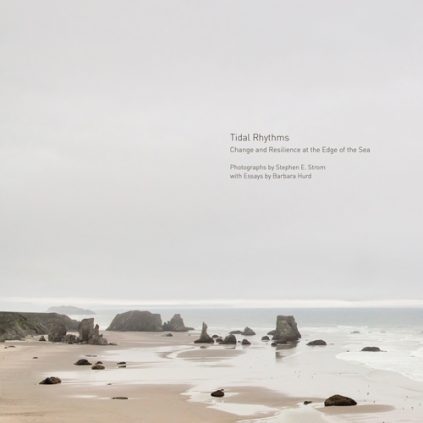-
Archives
- March 2025
- February 2025
- April 2024
- June 2022
- April 2021
- April 2020
- October 2019
- July 2019
- April 2018
- October 2017
- April 2017
- July 2015
- January 2015
- September 2014
- May 2013
- April 2013
- February 2013
- January 2013
- November 2012
- October 2012
- September 2012
- April 2012
- January 2012
- September 2011
- August 2011
- July 2011
- June 2011
- May 2011
- March 2011
- January 2011
- November 2010
- September 2010
- July 2010
- May 2010
- March 2010
- January 2010
- November 2009
- September 2009
- July 2009
- May 2009
- March 2009
- January 2009
- November 2008
- September 2008
- July 2008
- May 2008
-
Meta
TIDAL RHYTHMS: Change and Resilience at the Edge of the Sea
TIDAL RHYTHMS: Change and Resilience at the Edge of the Sea
Tidal Rhythms: Change and Resilience at the Edge of the Sea is a collaborative effort by photographer Stephen Strom and award-winning essayist Barbara Hurd. Strom’s images, taken along beaches in the Gulf of California and the Northern California and Oregon coasts, document a world teeming with ancient life-forms, clinging to rocks and finding nourishment but revealed for only a few hours before the tidal waters return. The primitive flora and fauna together create transient marine landscapes whose complex patterns resonate with what we humans perceive as beauty.
Following the rhythms of Strom’s images as they travel between intimate portraits and expansive vistas, Hurd’s lyrical and philosophical essays both continue and complicate those cadences as she explores not just resonance, but also disturbance. As artist and writer move us from high tide to low tide and from the panoramic to the minuscule and back again, the reader is confronted with the larger issues of what happens as the seas rises, warms, and acidifies. Tidal zones are one of the first landscapes to be threatened—almost invisibly—by global climate change. Mussels, barnacles, and tidal pools are flung and ruffled or warmed and acidified in ways that stress the lives of those who live there. Shells begin to thin, species migrate north, and habitats literally disappear, yet few people are even aware of these amazing environments.
Change, of course, is part of an ancient pattern. For billions of years, the sea has risen and fallen, and life-forms have managed to adapt or not. But the current pace of change confronts us with a new and urgent question: Can the long-established but delicately balanced worlds between tidelines evolve rapidly enough to enable continued sustenance and maybe even a new beauty? In Tidal Rhythms, we are given the gift of a new world-view.

“Rachel Carson wrote that the “edge of the sea is a strange and beautiful place . . . where the tides have pressed forward over the continents, receded, and then returned,” where they “advance and retreat in their eternal rhythm.” I’ve long been drawn to the meeting place of land and sea in an eternal dance. The book ‘Tidal Rhythms’ celebrates this marginal world with exceptional beauty and grace. Stephen Strom’s photographs reveal patterns and textures of the shoreline dance; Barbara Hurd’s words urge us to pause, reflect, and understand the shore’s fragility and resilience. I can easily imagine myself wading the tidal zone with attentive eye and ear as I turn each page. What a glorious gift to us all.”
–Lauret Savoy, Professor of Environmental Studies, Mount Holyoke College and author of Trace: Memory, History, Race, and the American Landscape (Counterpoint Press, November 2015).
“‘Tidal Rhythms’ is a revelation. Strom’s breath-taking photographs reveal mysteries and find meanings in patterns of blue mussels and barnacles, sand and water. Barbara Hurd’s accompanying essays are beautiful and honest, in love with the tides, in mourning for their losses. Not since reading Rachel Carson, have I taken such delight in a book about the edge of the sea.”
— Kathleen Dean Moore, author of Great Tide Rising and Piano Tide, A Novel

